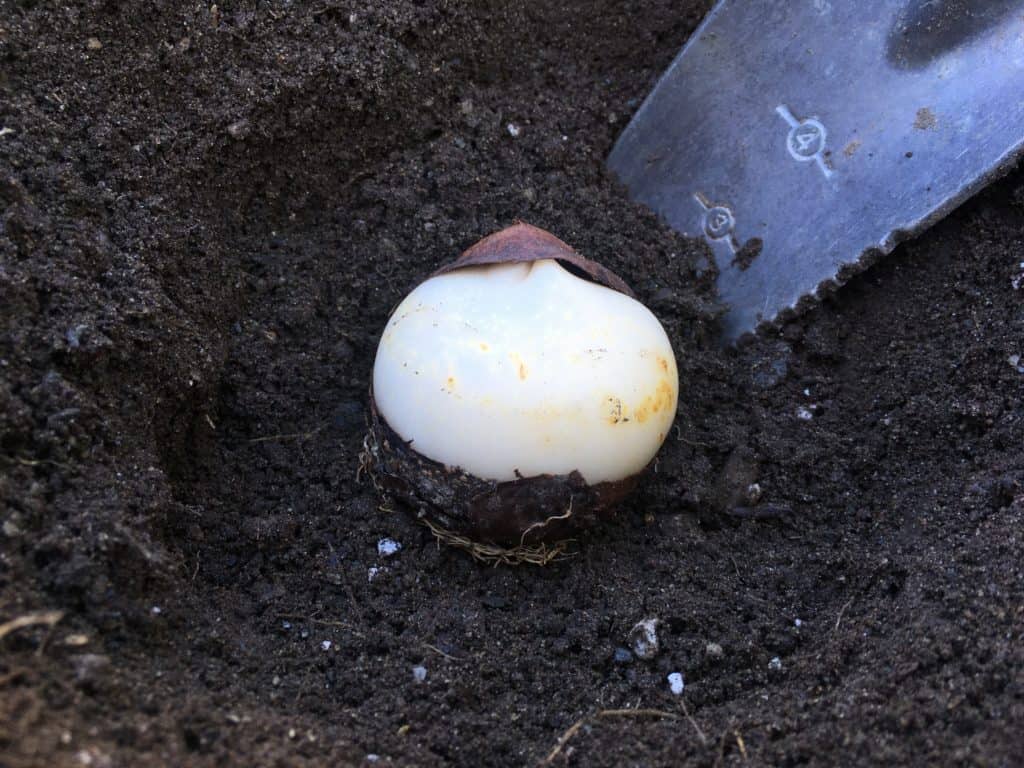
By Bonnie Kirn Donahue
Do your future self a favor, and plant spring-blooming bulbs this fall.
Depending on where you live, there can be a month or more after the snow recedes in spring until we see flowers. Planting spring-flowering bulbs shortens this window and packs a ton of color, contrast and liveliness against a backdrop of the slowly awakening earth. Spring- flowering bulbs are an incredibly hopeful presence in a time of cool temperatures and unpredictable forecasts.
The key to having bulbs bloom in the spring is to plant them in the fall. The best time to plant is mid-September through October when temperatures are cooler. Fall-planted bulbs need weeks of hibernation in a dark, moist and cool environment to slowly develop roots before spring.
There are many types, sizes and colors. Scilla, snowdrops and crocus are small bulbs that look beautiful en masse. Scilla happily can spread under the right conditions, creating carpets of blue in gardens and lawns.
Tulips, daffodils and hyacinths tend to be taller with larger, more vibrant colors. These bulbs are showstoppers whether spaced closely together or far apart.
To plant spring-flowering bulbs, choose a site with well-drained soil and full to part sun. For best results, get a soil test to determine your soil’s fertilizer needs for bulbs. Fertilizing the soil at planting can help the bulbs stay healthy and larger in future seasons.
Soil tests can be obtained from the University of Vermont Agricultural and Environmental Testing Laboratory (pss.uvm.edu/ag_testing).
The depth of planting depends on bulb size although as a rule, plant bulbs at a depth of two to three times the height of the bulb. Depending on the number of bulbs, you can dig holes individually for each bulb or dig out a larger area and plant multiple bulbs in the hole.
Smaller bulbs like scilla, snowdrops and crocus can be planted closer to one another, about 1-2 inches apart, while tulips and daffodils should be planted 3-6 inches apart. Make sure that the tip of the bulb points up to the sky, and water well after planting.
To prevent squirrels, mice and other critters from digging up your tulip bulbs, use wire mesh to make a barrier around all sides and the top of the bed after planting. An alternative is to select bulbs that do not attract rodents. Daffodils are poisonous, for example, so rodents, as well as deer, will leave them alone.
In the spring resist the temptation to cut back the foliage immediately after flowering. It is a good practice to trim back the seed head, but leave the foliage until it dies back and yellows. This allows time for the bulbs to send energy from the plant foliage back into the bulbs and will produce bulbs that are larger with showier flowers in the future.
While crocuses, scilla and daffodils can be left in the ground year-round, tulips and hyacinths should be dug up after their foliage has dried out. Store these bulbs in a dry, well-ventilated area until time to replant in the fall.
To bring the joy of spring flowers inside, plant a tulip cutting garden. If you have a vegetable garden or raised bed with spaces that are opening up this fall, use a small area to plant tulips for spring cutting.
Keep in mind that it will take at least a few weeks for the foliage to die back next year, which means that this part of your vegetable garden won’t be available for planting until around mid-June.
There is nothing like starting spring with the fantastic colors of spring bulbs. Planting bulbs now will pay off in incredible ways after a long winter.
Bonnie Kirn Donahue is a UVM Extension Master Gardener and landscape designer from central Vermont.




